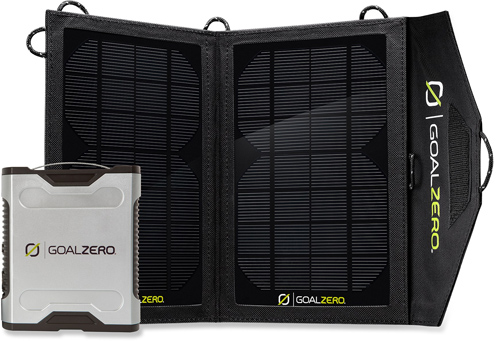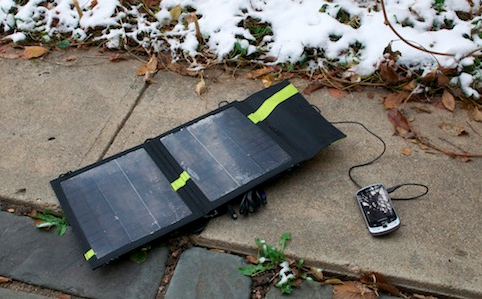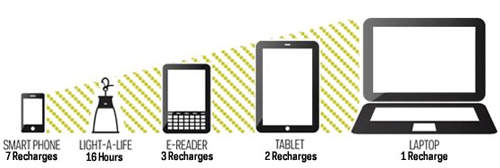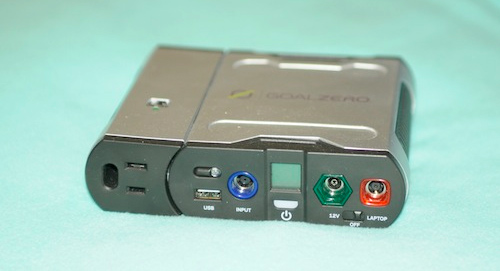I set my dead smartphone in a sunny meadow and walked away. A couple hours later, it was fully charged.
Portable solar-charging products like the Goal Zero Sherpa 50 make that kind of scenario completely realistic.
With a price tag of $449.99, this is no buy-on-a-whim purchase. But the Sherpa 50, which comes out early this year, gives “anytime, anywhere” power if you need it.

Built for use in the wilderness, the kit comes with two small solar panels which, combined, put out 13.5 watts of power. For portability, they fold together like a hardcover book.
One side of the package contains a mesh pocket that holds a removable recharger unit (essentially a battery pack with ports on the back). There are outputs including USB and 12-volt to plug in devices.
The whole package weighs about 3 pounds. It fits in a backpack easily and can be brought deep into the wilderness with little fuss.
I tested the solar panels and battery pack combination over three months with different devices and found it a practical power source for off-the-grid use.

The solar panel can be used alone. Plug in products from cell phones to tablets, and the panel turns sun energy into power for your device.
For example, when my phone was connected to the panel it charged fully after about five hours in bright sun. You can use the panel for much shorter time periods if you simply need a little juice to bring a dead phone back to life for a single call.
Beyond the solar panel, the heart of this kit is the Sherpa 50 power pack. As noted, this is essentially a portable battery pack with outputs such as USB and 12-volt on back.
You can charge the Sherpa pack at home via a wall outlet and then bring that stored power anywhere. It also attaches to the solar panels to be recharged outside, storing solar power for later use.

In the field, simply plug devices into the Sherpa pack for a recharge. Goal Zero claims the 50 watt-hours provided by the power pack is enough juice to recharge a cell phone seven times.
When the Sherpa pack is drained, hook it up to the kit’s solar panel. In ideal bright sun, the power pack can be recharged by the solar panel in about 4 hours.
The power pack works well with laptops. It kept my MacBook Pro’s battery at full charge while I worked on the computer for more than two hours, essentially adding two hours to the battery life of my computer.
Computers like a MacBook require a couple special adapter cords. I used an Apple 12-volt adapter (used with car chargers) and a special Goal Zero cord with a car-charger port to attach my computer to the system.
For small electronics, the Sherpa 50 is ideal. It can charge USB-compatible headlamps, iPods, a handheld GPS, cameras, and other gadgets with ease. It’s an expensive choice, however. There are cheaper products on the market with similar functions.

We asked Goal Zero why the Sherpa 50 kit costs so much ($449.99). The company noted a few areas, including its “brand name” (not generic) components, from its lithium-ion batteries to its charge-controller chip. It is capable of sustaining 75 watts of power continuously, something the brand noted is not the case from similar units. (We were unable to test that claim.)
The unit is differentiated with its compact size. It has an LCD battery status display. Finally, “chain-ability” was another reason Goal Zero said the Sherpa is expensive, meaning you can hook multiple units together to make a larger charging bank.
Goal Zero will begin selling the Sherpa 50 early this year. REI and other retailers already have it listed for sale online, though out of stock, for $399 or slightly less. If you need big power in a small package, the 3-pound Sherpa 50 kit could be your portable substation solution.
—Sean McCoy is a contributing editor based in Denver.






